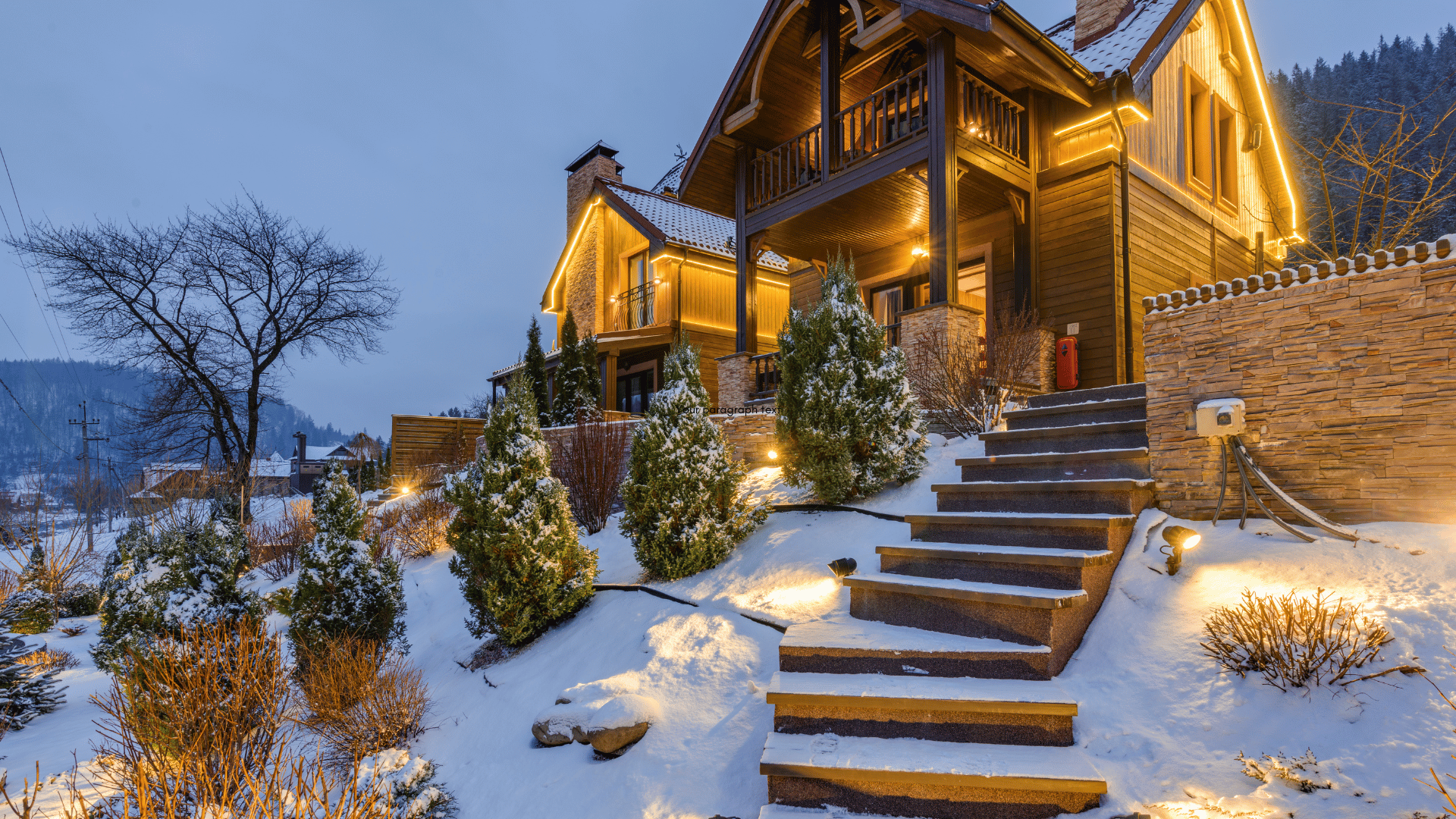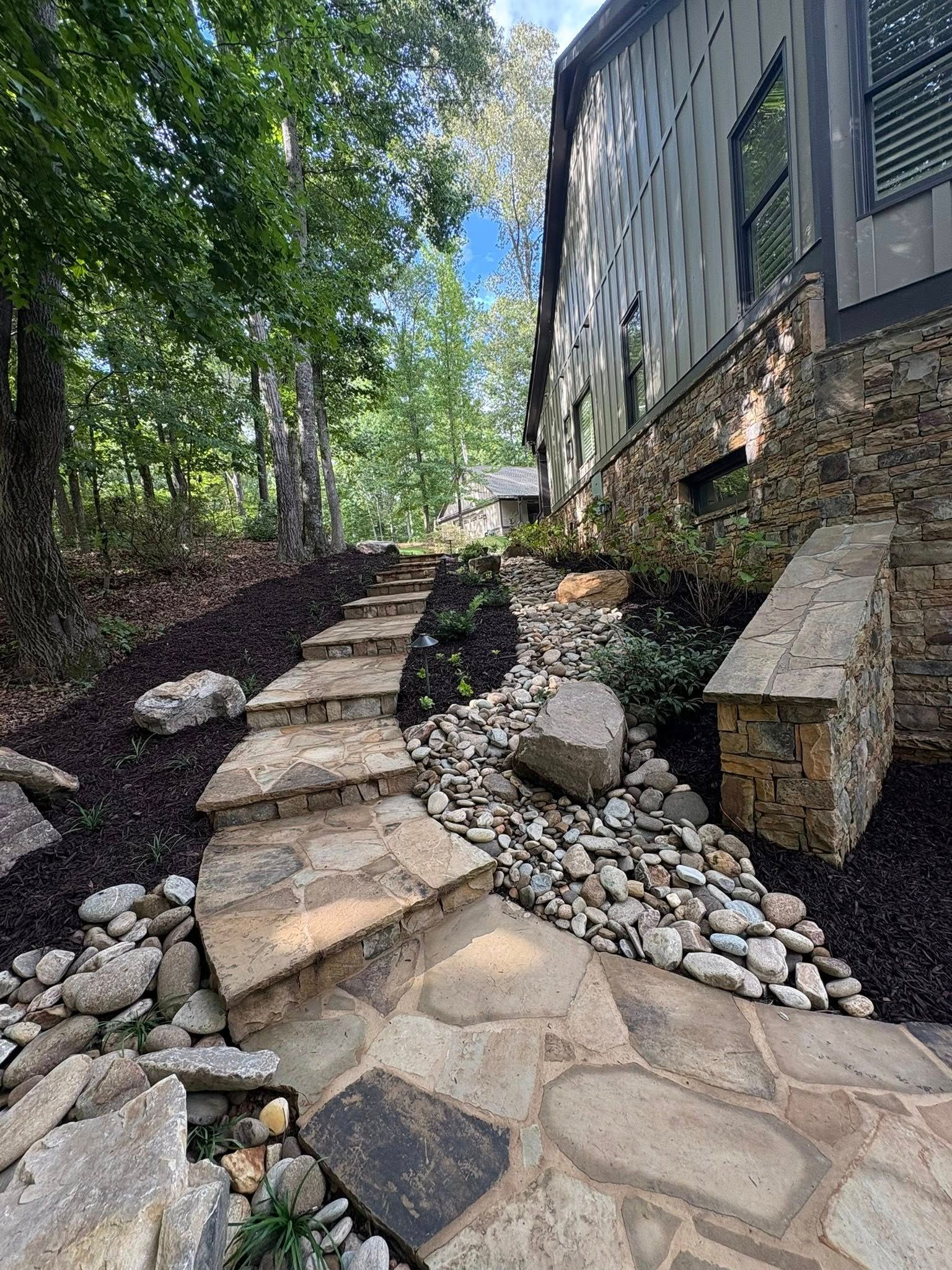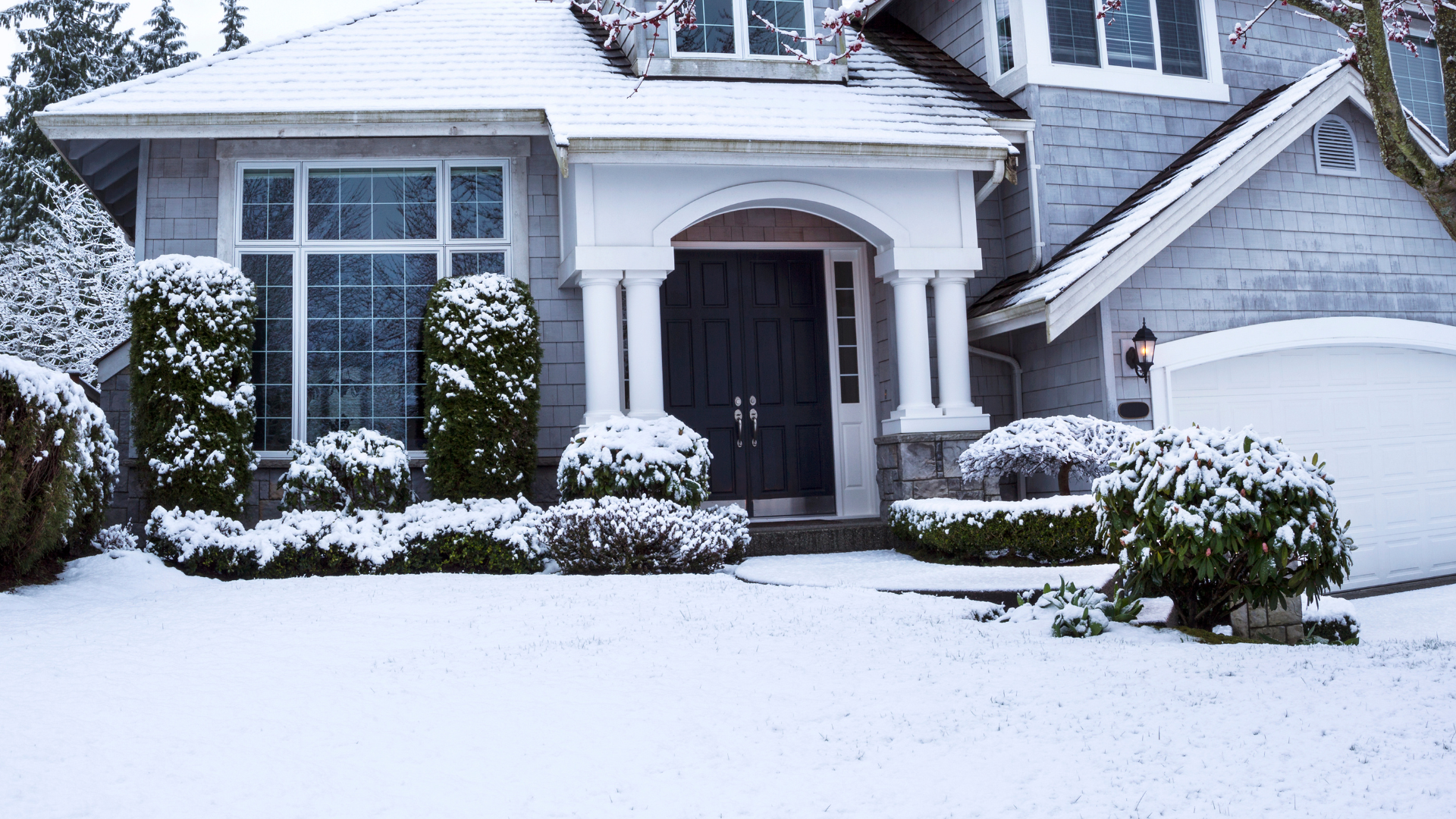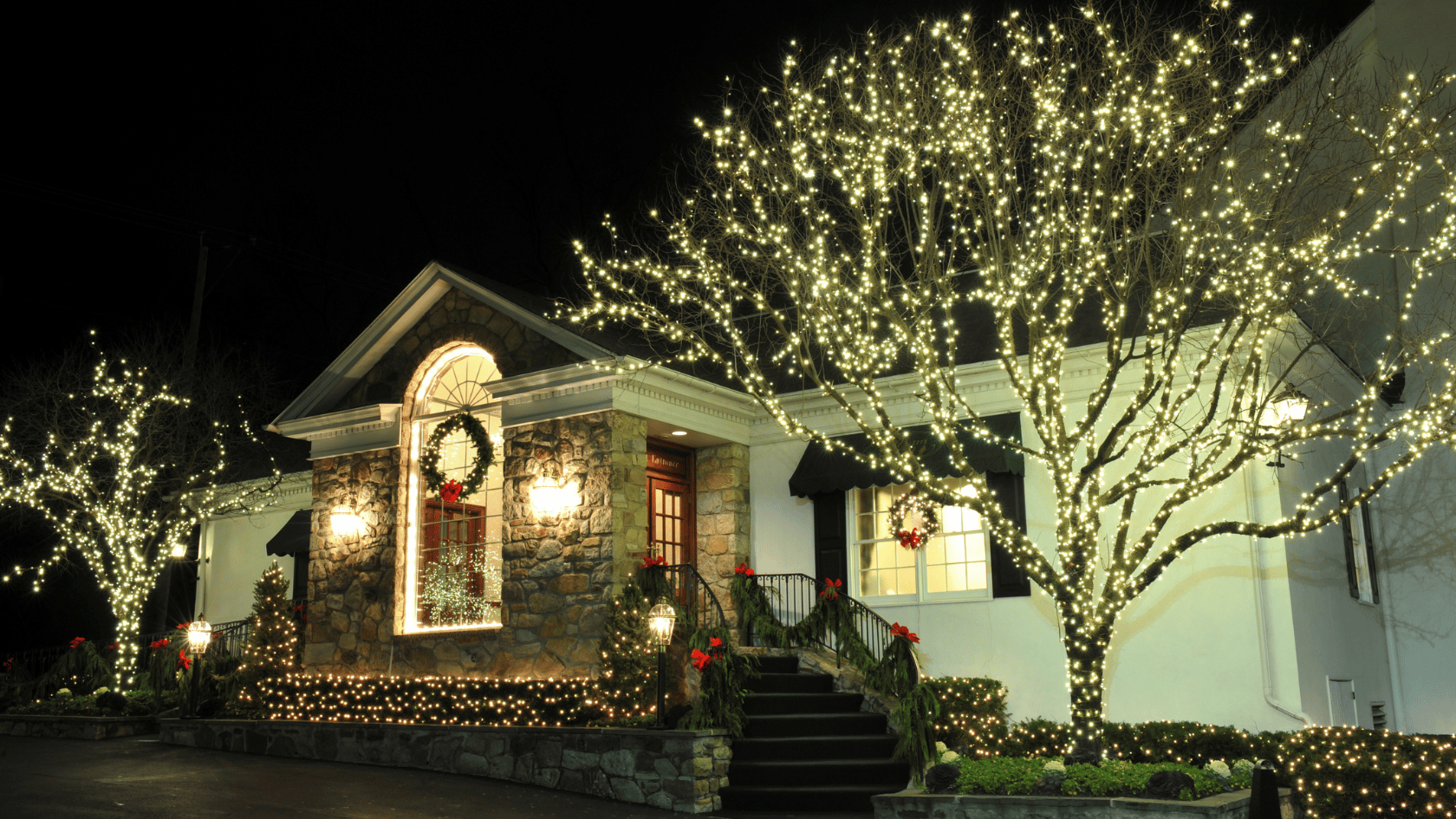Landscaping Tips from DRLscape LLC

By Joey Perry
•
January 6, 2025
How Winter Affects Your Landscape's Drainage: Signs You Need to Improve Your Yard's Flow As winter settles in, your landscape faces a number of challenges that can affect the drainage of your yard. Snow, ice, and rain can create issues that might go unnoticed until the spring thaw. Winter drainage problems, if left unaddressed, can lead to water pooling in your yard, erosion, and even damage to your plants and hardscaping. At DRLscape LLC , we understand the importance of maintaining proper drainage year-round. In this blog post, we’ll explore how winter weather can affect your landscape’s drainage and highlight signs that your yard may need some attention before the warmer months arrive. How Winter Weather Impacts Drainage Winter introduces several factors that can complicate drainage in your yard: Frozen Ground : When the ground freezes, water can't penetrate the soil. As a result, any precipitation—whether from snow, rain, or melting ice—sits on top of the ground instead of being absorbed. This can lead to pooling water or soggy spots in your yard. Snow and Ice Accumulation : During winter storms, snow and ice build up in your yard. When they start to melt, the runoff can overwhelm your drainage system, particularly if it’s already clogged or ineffective. This can result in water pooling near your foundation, on paths, or in low-lying areas of your landscape. Clogged Gutters and Downspouts : Winter precipitation can cause leaves, dirt, and other debris to clog your gutters, blocking the natural flow of water off your roof. Without proper drainage, water can spill over the sides, causing erosion or even damaging your roof and walls. Signs You Need to Improve Your Yard's Drainage Proper drainage is essential for the health of your lawn, plants, and landscape features. Here are some signs that your landscape’s drainage system might need an upgrade before the spring thaw: Pooling Water in Low Spots After a heavy snow or rain, check for areas in your yard where water seems to pool or collect. These low spots may be more noticeable in the winter when the ground is frozen, and water has nowhere to go. Pooling water is a clear sign that your yard's drainage isn’t functioning properly, and it can lead to more serious issues, such as soggy patches in the spring or even foundation damage if left unchecked. Erosion Near Foundation or Walkways Erosion is a common result of poor drainage. If water is not directed away from your home’s foundation, it can erode the soil and cause the ground around your foundation or walkways to wash away. This could lead to cracks in your foundation or sunken paths, which will only worsen as the spring thaw brings more water. Water Running Toward Your Foundation If water is running toward your home’s foundation instead of away from it, you have a serious drainage issue. This is especially evident in winter when ice or snow melt can create rivers of water that may accumulate around the base of your house. Over time, this can lead to water damage, mold, and foundation problems. This can also cause structural issues that can be costly to repair. Damp or Soggy Lawn A healthy lawn needs good drainage to thrive. If your lawn is soggy or constantly damp throughout the winter, it’s a sign that water isn’t draining as it should. This can result from compacted soil, poor grading, or clogged drainage systems. Over time, this excess water can suffocate grass roots, causing patches of dead or unhealthy grass once spring arrives. Clogged Gutters and Downspouts Gutters and downspouts are essential for directing water away from your home, but they can easily become clogged with leaves, twigs, and debris during the fall. If not cleared before winter, these clogs can cause water to overflow, leading to ice dams, roof leaks, and water pooling around the base of your house. It's a good idea to inspect your gutters regularly during the winter to make sure they are clear of debris. How to Address Drainage Issues Before the Spring Thaw If you’ve noticed any of these signs, it’s important to take action before the spring thaw arrives. Here are some steps you can take to improve your landscape’s drainage and prevent future problems: Clear Your Gutters and Downspouts Begin by cleaning your gutters and downspouts to ensure that they can effectively channel water away from your home. Consider installing gutter guards to prevent future clogs. Properly functioning gutters are crucial in keeping water from overflowing and causing damage to your home and landscape. Regrade Your Yard Grading is one of the most effective ways to improve drainage. By adjusting the slope of your yard, you can direct water away from your foundation and toward designated drainage areas. This process helps prevent water from pooling in low spots and reduces the risk of erosion. Regrading may require the help of a professional landscaper to ensure the correct slope and proper drainage paths. Install a French Drain or Dry Well If you have areas where water regularly collects, consider installing a French drain or dry well . A French drain is a trench filled with gravel and a perforated pipe that channels water away from problem areas. A dry well is a large underground container that collects excess water and allows it to slowly percolate into the surrounding soil. Both options help keep your landscape dry and healthy, even during the wettest seasons. Aerate Your Lawn Aerating your lawn in the fall or winter allows water to penetrate the soil more effectively, reducing surface water runoff. Aeration also helps reduce soil compaction, which is often a major cause of poor drainage. It’s an easy and cost-effective solution for improving the overall health of your lawn. Address Low Spots with Soil Fill Low spots in your yard can be filled with additional soil or raised beds to prevent water from collecting. This not only improves drainage but also gives you the opportunity to enhance your landscape with new planting areas that will thrive in the spring. Check Your Irrigation System If you have an irrigation system, it’s essential to make sure it’s working properly. Sometimes, sprinklers can get clogged, or pipes can freeze and burst. Check your irrigation lines to make sure they are functioning well and make any necessary repairs. Winter is the perfect time to assess your landscape’s drainage system and address any issues before they become bigger problems in the spring. By taking a proactive approach to your yard’s drainage now, you can avoid costly repairs and ensure your landscape remains healthy and vibrant as the seasons change. At DRLscape LLC , we specialize in landscape drainage solutions that are tailored to your property’s needs. If you're experiencing drainage issues or would like to discuss ways to improve your yard’s flow, contact us today to schedule a consultation. Let’s make sure your landscape is ready for a healthy, beautiful spring!

By Joey Perry
•
November 23, 2024
As the cold weather settles in, many homeowners may feel like it's time to forget about their landscapes until spring. However, winter is a crucial time for preparing your outdoor space for the coming seasons. At DRLscape LLC, we believe that a little winter maintenance can go a long way toward ensuring your landscape stays healthy, beautiful, and ready to thrive when warmer weather returns. Here are some essential winter landscape tips to help your yard weather the season and come back even stronger in spring. Protect Your Plants from Harsh Weather Winter can be tough on plants, especially those that aren’t native to colder climates. Here are a few ways to help them survive: Mulch : Apply a layer of mulch around the base of your plants to insulate their roots. Mulch helps to retain moisture, regulate temperature, and protect plants from extreme cold. Just be sure to keep mulch away from plant stems to prevent rot. Cover Delicate Plants: Use burlap or frost blankets to shield sensitive plants from freezing temperatures. For shrubs and small trees, wrapping them with burlap helps prevent windburn and frost damage. Prune Dead or Damaged Branches: While it's best to do most pruning in late winter or early spring, it's a good idea to remove any dead or diseased branches during the winter months. This reduces the risk of damage from heavy snow and ice, ensuring your plants stay healthy. Winterize Your Lawn Your lawn may look dormant in winter, but it’s still important to prepare it for spring. Here are some tips for winterizing your lawn: Aerate Your Lawn : If you haven’t already done so in the fall, consider aerating your lawn before the ground freezes. Aeration helps improve soil drainage and reduces compaction, allowing water and nutrients to reach the roots more effectively. Fertilize in Late Fall: Applying a slow-release, winterizing fertilizer in late fall provides your grass with the nutrients it needs to survive the cold months. This gives it a head start once the weather warms up. Keep It Clean: During the winter, debris like leaves, branches, and other debris can smother your lawn. Make sure to keep your lawn clear to prevent mold growth and ensure proper air circulation. Maintain Your Hardscaping Winter can be tough on your hardscape features, like patios, walkways, and fences. To avoid damage and prolong their lifespan: Remove Snow and Ice Carefully: If you live in an area with heavy snowfall, be sure to clear snow regularly to prevent buildup. Avoid using salt or ice melt on stone or brick surfaces, as these can cause long-term damage. Opt for sand or gravel instead for traction. I nspect Fencing and Gates: The weight of snow and ice can stress your fencing and gates. Regularly check for any leaning, broken parts, or loose hardware, and make repairs as needed before more serious damage occurs. Prepare Trees for Winter Weather Trees are among the most vulnerable elements of your landscape during winter storms. Help your trees survive the cold months by: Pruning: Remove dead or weak branches that could break off during winter storms. Be careful not to over-prune, as trees need some structure to protect against wind and snow. Wrapping Young Trees: For newly planted trees or young saplings, protect them from harsh winds, snow, and ice by wrapping them with burlap or using tree guards. This helps prevent frost cracks and sunscald. Watering: Trees still need water during the winter months, especially in areas where the ground doesn't freeze. Watering before the coldest part of winter helps your trees stay hydrated through the season. Create a Winter Wonderland with Lighting Just because it’s cold doesn’t mean you can’t enjoy your outdoor space. Winter lighting can make your landscape shine during the darker months. Here’s how to enhance your winter landscape: Add String Lights: String lights along fences, trees, and walkways can create a warm, inviting ambiance. Choose LED lights for energy efficiency and long-lasting use. Highlight Key Features: Use outdoor lighting to highlight beautiful tree branches, sculptures, or architectural features that are visible in the winter months. Focused lighting adds a magical touch to your landscape even during the colder seasons. Solar Lights : Solar-powered lights are perfect for winter since they don’t require wiring and can be placed anywhere in your garden or along pathways. Plan for Spring Landscaping Winter is also a great time to start planning for your spring landscaping projects. This can give you a head start on improving your yard when the warmer months arrive: Design New Garden Beds: Take time now to plan any new garden beds or flower planting areas. Map out the space, think about color schemes, and select the types of plants you want to add for the upcoming season. Consider New Fencing or Gates: If you're thinking about upgrading your fencing or gates, winter is a great time to get started on the design and planning phase. DRLscape LLC can help you design custom fencing and gates that will enhance your landscape and provide added privacy and security. Evaluate Drainage Issues: If you've experienced any drainage problems during the year, winter is a good time to evaluate solutions. Proper drainage is essential to maintaining a healthy landscape, and addressing issues now will ensure your yard is ready for spring growth. Winter may seem like a quiet time for your landscape, but it’s the perfect opportunity to prepare for the warmer months ahead. Whether you’re protecting plants from the cold, maintaining hardscape features, or planning your spring garden, these simple winter landscape tips can help you keep your outdoor space healthy, beautiful, and ready to bloom come spring. At DRLscape LLC, we’re here to help you with all your landscaping needs year-round. Contact us today for expert advice or to schedule a consultation for your winter landscape care. Contact Us








